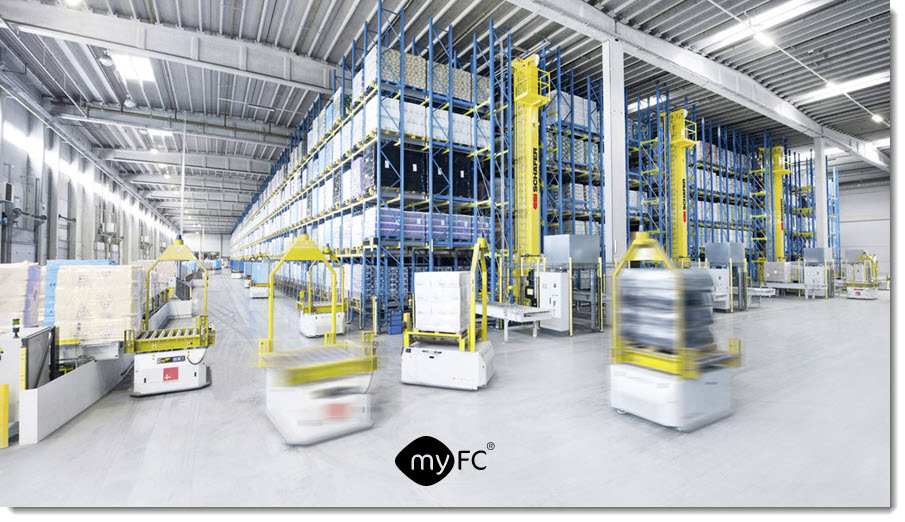
- With myFC’s fuel cell technology, a company who deals with intralogistics can significantly reduce the total cost for storage robots of the type AGV and AMR.
The background is several technical advantages.

Storage robots are usually equipped with a battery. A normal operating time is about eight hours, then they need to charge for about an hour and a half. This means that they are idle up to 19 percent of the time.
Therefore, a surplus of robots of about 10–20 percent is needed to be able to maintain a continuous operation around the clock, which is a common requirement in modern warehouse management.
This means an extra cost for the robots and for the extra surfaces needed to make space for them. The necessary infrastructure for charging also requires extra space.
Unlike the stacked fuel cells that dominate the market, myFC’s modular micro fuel cells can be adapted to the small and cramped spaces offered in storage robots. This makes it possible to tailor the power modules with exact sizes and capacities, which also means a potential to reduce costs.
myFC’s fuel cells combined with an accumulator increase the operating time to 99.5 percent, as the filling of hydrogen gas takes just a few minutes.
However, an accumulator is needed as a buffer to optimize the fuel cells in relation to the robots’ electric motors. Fuel cells and batteries provide a favourable combination of the fuel cells even and stable electricity production and the accumulator’s capacity to be able to deliver high effects in a short time during acceleration – or to handle high effects generated when braking.
The constant availability of power from the fuel cells gives the batteries a constant charge, which radically increases their durability and life cycle. A saving both in terms of investment costs and environmental effects.
The combination also makes it possible to reduce the size of the batteries.
myFC’s fuel cells, on the other hand, are very durable. After 10,000 hours of use, the deterioration is marginal, resulting in a very good Total Cost of Ownership.
An alternative to using batteries as accumulators are supercapacitors which, like batteries, rapidly can deliver high effects.
The capacitors can also take care of the power generated by the wheels of the platforms during braking, without – unlike batteries – either having to be oversized or be damaged by the temporary power peaks.
To reach the right voltage level, the batteries in the robots are connected in series. This means that each battery cell in the connection can be discharged at different times, and thus give an empty battery pack already when the least productive cell is discharged. The problem results in increased energy consumption, or unused battery capacity. To handle this, a Battery Management System is required that provides an increased cost in itself
When the accumulators are combined with myFC’s fuel cells, the constant addition of electrical power from the distributing fuel cells makes sure that each battery cell or supercapacitor is individually and automatically kept charged at the right level.
– Our fuel cell system is designed for that kind of use, and our patented Active Power Balancing system ensures that series-connected accumulators maintain an even charge. That provides optimal performance and longevity, says Sebastian Weber, CTO for myFC.
Read the most up to date Fuel Cell and Hydrogen Industry news at FuelCellsWorks




